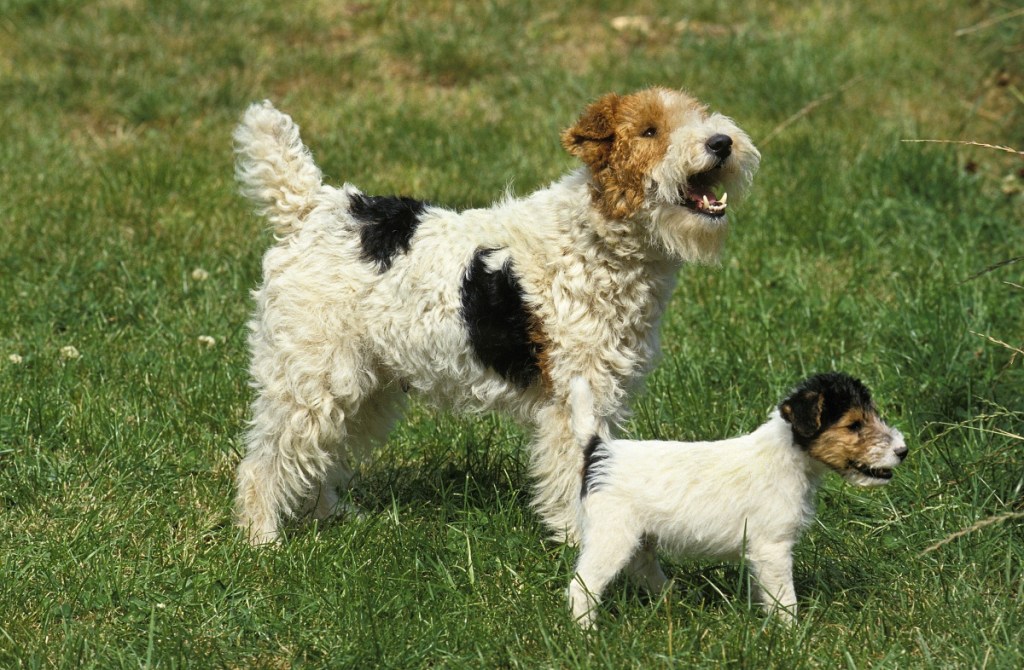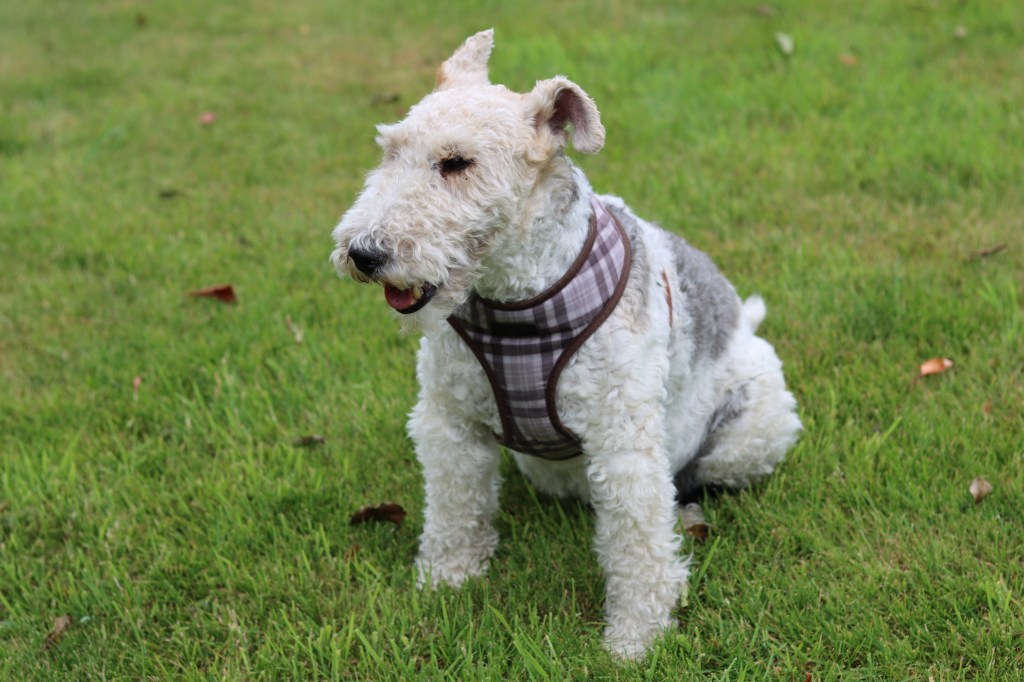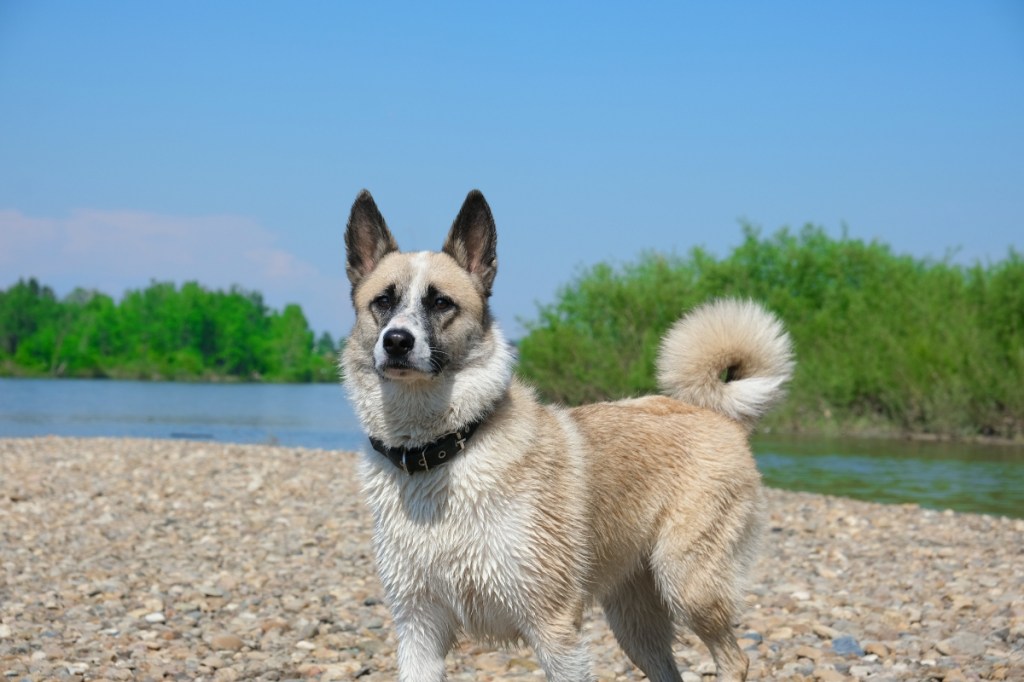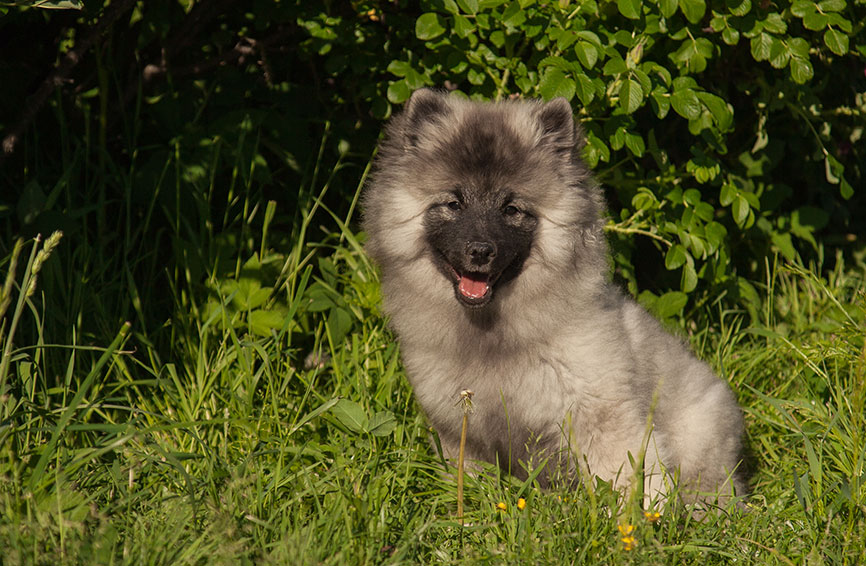Table of Contents
Introduction to Wire Fox Terriers
Known for being confident, intelligent, and expressive, the wire fox terrier can be a wonderful household companion for active people. This friendly dog has the characteristic independence of a terrier and is also athletic, amusing, and low-shedding.
However, wire fox terriers can also be challenging to train and are prone to certain health conditions that may be covered by pet health insurance. Wire fox terriers make wonderful companions, but is this the best dog breed for your lifestyle and family?
To learn more about this breed, read Healthy Paws’ guide to wire fox terriers.
Size of Wire Fox Terriers
A fully grown adult male wire fox terrier usually weighs about 18 pounds, and an adult female weighs between 15 and 17 pounds. Males and females stand no more than 15.5 inches tall.
Here’s how big you can expect your wire fox terrier to get as the dog grows from puppyhood to adulthood:
| Average Weight Chart | 6 months | 12 months | 18 months |
| Male wire fox terriers | 11-13 lbs. | 16-18 lbs. | 17-19 lbs. |
| Female wire fox terriers | 9-11 lbs. | 14-16 lbs. | 15-17 lbs. |
Characteristics of Wire Fox Terriers
Wire fox terriers are lively dogs that are highly trainable and can excel at various dog sports and activities. They make lovely show dogs but require regular exercise and mental stimulation to stay healthy and happy. Wire fox terriers are natural athletes and can be little comedians, too. There’s never a dull moment in the household when you are living with a wire fox terrier!
They only have moderate care, health, and grooming needs and tend to do very well around kids. As you get to know a wire fox terrier’s personality, here’s what you can expect based on the breed characteristics:
| Breed Characteristic | Level (High, Medium, Low) |
| Affectionate with People | High |
| Good with Kids | High |
| Good with Pets | Medium |
| Need for Exercise | High |
| Energy Level | High |
| Intelligence Level | High |
| Able to Be Trained | High |
| Amount of Barking | High |
| Amount of Shedding | Low |

History of Wire Fox Terriers
The history of the wire fox terrier dates back to the late 1700s when British fox hunts were wildly popular. These dogs were tasked with getting foxes out of their hiding places so that hounds and hunters could pursue them in the open countryside. They were essential on hunting expeditions and helped their owners be successful in tracking down game. Historians say that the breed descended from the rough-coated black and tan terrier that was used for hunting foxes.
The American Kennel Club recognized the breed in 1885. However, the club did not recognize the wire fox terrier and the smooth fox terrier as separate breeds until the late 19th century.
King Edward VII had a wire fox terrier named Caesar. In 1920, RCA used a photo of a smooth fox terrier in its logo. The breed has been featured in movies and on TV, starting with a famous pup starring in the “Thin Man” movies in the 1930s and 1940s.
Wire fox terriers have consistently been popular show dogs and have won many awards for their skills and appearance. However, they are still considered to be an uncommon breed and are rarer as household pets than many other types of dogs.
Wire Fox Terrier Standard Information
The official standard of the wire fox terrier describes the breed as alert, quick, and keen-eyed. Given their size, these dogs have great speed and endurance and can cover a lot of ground.
Here is an overview of the breed standard information for wire fox terriers:
Head:
- 7 to 7 ¼ inches from the back of the occipital bone to the nostrils
- Keen expression
- Dark eyes that are moderately small and deep-set
- Small and V-shaped ears of moderate thickness
- Skull is almost flat and slopes slightly and gradually
- Nose is black
Neck, Topline, Body:
- Neck is muscular and free from throatiness
- Back is short and level with no slackness
- Tail is set on high and carried gaily
Forequarters:
- Shoulders slope steeply downwards when viewed from the front
- They appear long and well laid back when viewed from the side
- Elbows are perpendicular to the body
- Feet are round and compact
Hindquarters:
- Hindquarters are strong and muscular
- Hock joints are well bent and near the ground
- Feet are the same as in the front
Coat:
- Appears to be broken with hairs that are dense and have a tendency to twist
- Wiry texture, like coconut matting
- Hardest coats are crinkly and slightly waved
- ¾ to 1-inch length on the shoulders and neck
- 1 ½ inches on the back, ribs, withers, and quarters
Color:
- Predominantly white
- Brindle, red, liver and slaty blue are objectionable
Gait:
- Legs carried straight forward while traveling
- Hind legs propel the power

Caring for Wire Fox Terriers
Wire fox terriers are adventurous dogs that enjoy being out and about with their family members. They also tend to view everyone as a potential friend. They can be headstrong but are good at solving problems and love having a job to do. Active families love wire fox terriers, especially ones with older children who understand how to handle dogs.
Here are some general tips for taking the best care of a wire fox terrier:
Best Living Environments:
- Homes with fenced yards
- Can live in an apartment with adequate exercise
- Fine in households with other dogs, especially when introduced early in life
- Not the best with cats due to the strong prey drive
Type of Exercise:
- 45 minutes of exercise daily
- Walks, hikes, and runs
- Playtime in a yard or dog park
Mental Enrichment:
- Puzzle toys
- Agility training and dog sports
- Plenty of time with family members
- Keep stimulated to prevent digging and chewing behaviors
Training Strategies:
- Can be stubborn and independent
- Be consistent and patient with training
- Prioritize leash training
- Consider crate training while you are away
Grooming Tips:
- Hand-stripping or trimming to prevent hair from getting too long
- Brush at least weekly to prevent matting
- Only bathe when the dog is dirty
- Use high-quality shampoo for baths that does not eliminate natural oils
- Clip nails as needed
- Check ears for wax buildup
- Brush teeth daily
Common Health Problems of Wire Fox Terriers
The average life expectancy of a wire fox terrier is 12 to 15 years. The breed is generally quite healthy. However, due to their breeding and genetics, some wire fox terriers are at higher than average risk for certain diseases.
These are some of the most common health issues that arise with wire fox terriers:
- Patellar luxation
- Heart problems
- Cataracts
- Lens luxation
- Legg-Perthes disease (hip joint condition)
- Deafness
- Van den Ende-Gupta syndrome

Diet and Nutrition for Wire Fox Terriers
Most adult wire fox terriers will thrive when eating high-quality, nutritionally complete and balanced dog food. Puppies should eat puppy food until they are 10-12 months old. If you feed your wire fox terrier homemade dog food, make sure you are working from a recipe that is designed by a veterinary nutritionist and appropriate for your dog’s age and health status.
Feed the amount of dog food needed to keep your pet slim. You should be able to see your wire fox terrier’s waist and feel (but not see) their ribs without having to press too hard. In general, puppies need more calories per day than adults, but a dog’s needs will vary with his or her activity level and other factors. Canine obesity is an issue in many households and can actually shorten the lifespan of an otherwise healthy wire fox terrier.
Don’t leave food out all day for a wire fox terrier to graze on. Divide the total amount of food for the day into at least two meals for adults and three to four meals for puppies. Place the food out in a bowl at approximately the same time of the morning and evening each day.
Talk to your veterinarian if you have any questions about your wire fox terrier’s diet or health.
Where to Adopt or Purchase Wire Fox Terriers
The American Fox Terrier Club is the national breed club for wire fox terriers. It provides information about wire fox terriers and smooth fox terriers and a breeder directory. You can also contact rescue organizations, such as the American Fox Terrier Rescue and Wire Fox Terrier Midwest, to adopt a wire fox terrier in need of a loving home.
Related Breeds
If you’re looking for a new dog in your life, other similarly sized breeds share common characteristics with the wire fox terrier, including these:
- Smooth fox terrier
- Lakeland terrier
- Parson Russell terrier
- Rat terrier
- Russell terrier
Pet Insurance for Wire Fox Terriers
Pet insurance is an excellent idea to keep up with your energetic wire fox terrier and be prepared for whatever your pup might get into. Healthy Paws offers wire fox terrier pet insurance that lets you use any licensed veterinarian you trust and has no costly add-ons. With one easy-to-understand policy with flexible deductible and premium options, our insurance for wire fox terriers covers new accidents and injuries, hereditary conditions, cancer, emergency care, and alternative care.
You’ll have peace of mind knowing that you can always get your wire fox terrier the treatment it needs without having to worry about the high cost of vet bills. To learn more about pet insurance and its price, please request your quote on our website today.








